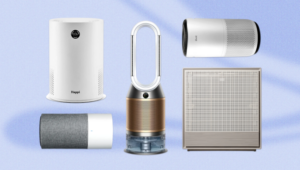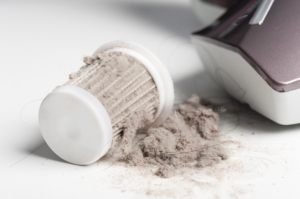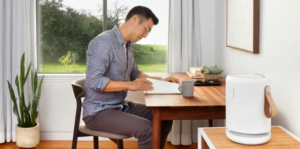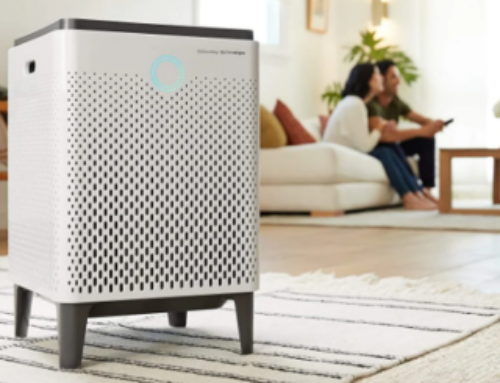Air Purifiers: What Do They Do?
There are Air Purifiers for almost anything, including allergy relief, chemical fume removal, and germ destruction. However, how does an air purifier work? What pollutants are they able to remove? Also, how can we be sure that they work? We will examine these questions below.
What Does an Air Purifier Do?

How an air purifier works depends on the problem it’s designed to solve. As an example:
A typical air purifier contains a filter, multiple filters, and a fan that draws in and circulates air. The filter captures pollutants and particles as air moves through it, and the cleaned air is returned to the living space. The most common filters are paper, fiber (usually fiberglass), or mesh, which one must regularly replace to maintain efficiency.
Some air purifiers utilize carbon filters to remove odors, smoke, and chemical fumes from the air. An ionizer attracts microscopic, positively-charged particles in your air (such as dust and allergens) by using electrons (negatively-charged particles). It makes them fall to the ground or be captured by a filter. Filters with HEPA technology capture particles as small as 0.3 microns with an efficiency of 99.97%. Thus, they are effective at trapping allergens that are present in the air.
By using UV lights, harmful microorganisms, such as bacteria, viruses, and mold spores, can be destroyed by germicidal UV-C light. You can also buy portable air purifiers and whole-house models that work with your existing HVAC system. Some air purifiers combine these air-cleaning methods to provide a solution that “covers more bases.”
Generally, air purifiers include a fan to draw air into them. Filters capture pollutants and particles as the air enters, thus removing them. Afterward, the filter returns the newly cleaned air to the room.
There is no way to capture all the pollutants, particles, and allergens that move through a room. But purifiers may capture many allergens and unwanted substances based on the filter used.
Many air purifiers feature high-efficiency particulate air (HEPA) filters that capture dust, pollen, and some mold spores. Some air purifiers use other types of filters and technologies. The use of ultraviolet germicidal irradiation is one type of air purifier that targets airborne spores, bacteria, and viruses. Filters equipped with activated carbon trap molecules that cause odors in other purifiers.
Depending on the machine, you can wash some filters and replace others after three to six months.
Air purifiers are designed to clean the air in rooms to a specific size. Rooms larger than 150 square feet may require some purifiers that are capable of operating in 500 square feet or more.
What Do Air Purifiers Filter Out?

Air purifiers can remove many contaminants from the air. Using this purifier, people who suffer from allergies, asthma, and other breathing conditions will be able to breathe easier in the room.
Air purifiers can remove pollutants and other contaminants such as:
- Bacteria
- Dust
- Mold
- Pet dander
- Pollen
- Smoke
- Viruses
- Volatile organic compounds
You can remove unwanted odors and volatile organic compounds from your room with a purifier that contains activated carbon filters.
It is intended that portable air purifiers be used in specific rooms or areas of your home to clean the air. As a result, they cannot clean the air throughout the house.
How frequently you will have to change filters varies based on the purifier type and usage.
Since they require meticulous maintenance, you will not typically find reusable or washable filters on the best air purifiers.
A reusable filter is generally efficient at removing larger airborne particles, such as dust mites and pollen, from the air. Likewise, UV (ultraviolet light) filters are also available, often advertised as effective at destroying biological impurities such as mold and bacteria. However, these filters require excessive wattage and more exposure to be effective. In addition, some bacteria are UV-resistant.
How Do We Know Air Purifiers Work?
Air purification systems do not always perform as advertised by their manufacturers. For this reason, it’s crucial to research potential products for your home before purchasing and installing them. Ensure that products are lab-tested, not just by the manufacturer or in a lab affiliated with the manufacturer or owned by the manufacturer.
Other Ways To Improve Home Air Quality

If you wish to control indoor air pollution, you should address the source of the problem and ventilate your home. We recommend trying these steps to help reduce indoor air irritants if you are interested in supplementing your air purifier or if you can do without one.
Whenever it is safe, open the windows to prevent irritants from entering the room (especially when air purifiers are not running). If possible, open windows on opposite sides of the room to create a stronger cross draft.
It is important to vacuum frequently. The best vacuum to purchase is one with a sealed system, a bag, and HEPA-certified. Dust is better trapped in these devices than sent back into the atmosphere. According to the Good Housekeeping Institute, the Kenmore Floor Care Elite Upright Bagged Vacuum is a good choice. One should regularly change air filters to maintain HVAC equipment and maximize efficiency. In addition, Dr. Roten states that “if suitable for your machine, you might consider purchasing a HEPA-specific filter for your circulation system.”
This will improve the efficiency of air recirculation. If possible, exhaust fans should ventilate the kitchen as the bath and laundry areas. After cooking, turn it on for a few minutes until it cools down, and then switch it on again before preheating the oven or firing up the burners. Reduce the use of candles and wood fires inside the home and prohibit smoking. Improving air quality can be achieved by reducing pollutant sources.
Quality Air Purification Solutions
With Gibber Services, we strive to provide our customers with top-quality air purification solutions made by reputable manufacturers. To learn more about how we can assist you if you suffer from poor indoor air quality in your home, don’t hesitate to contact us at 901-422-1258.





